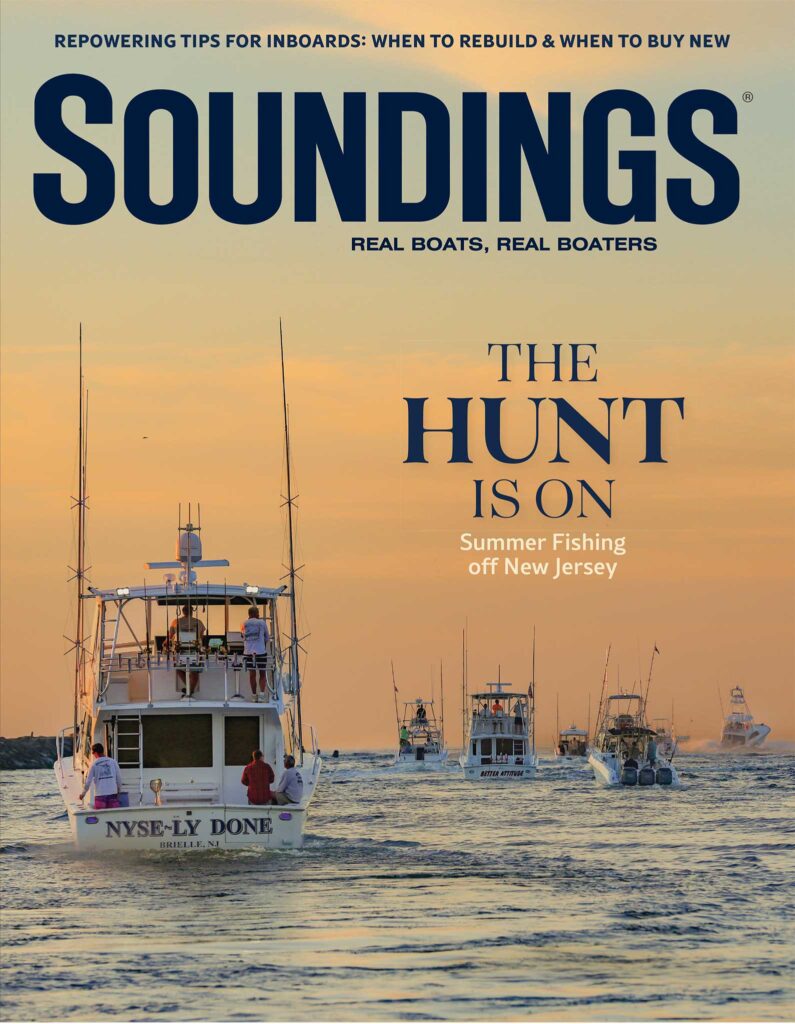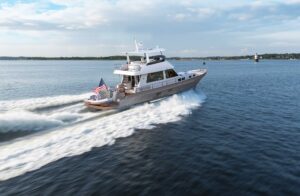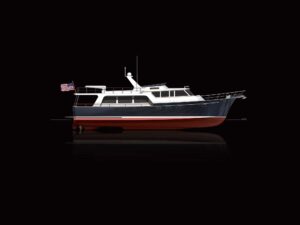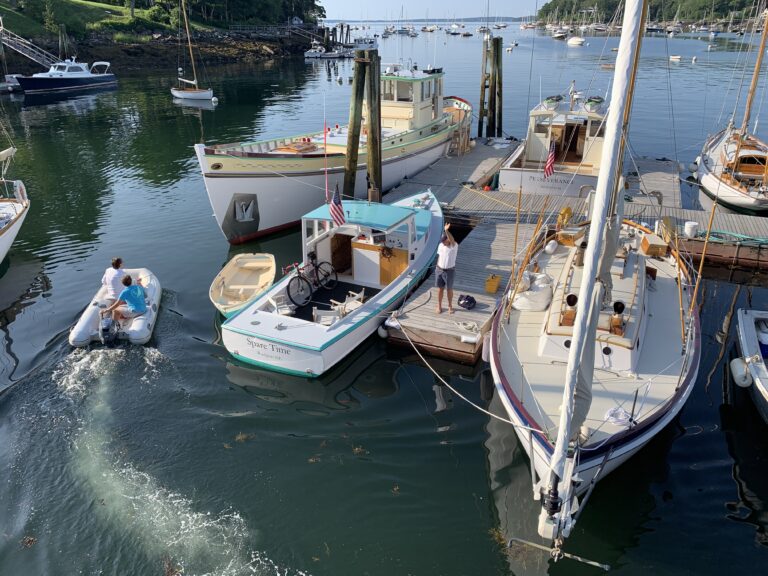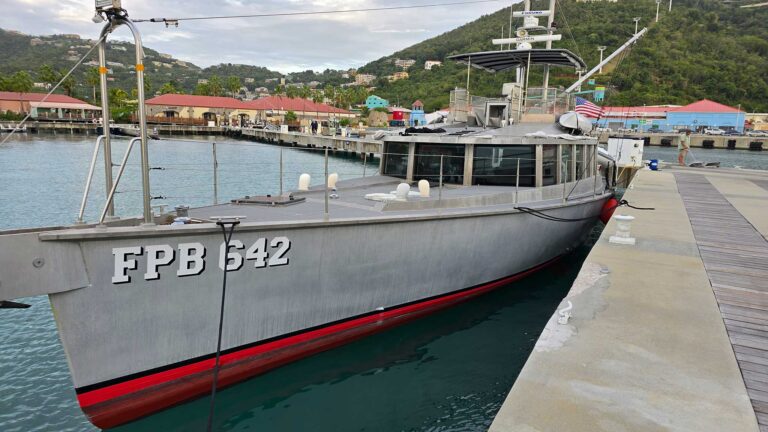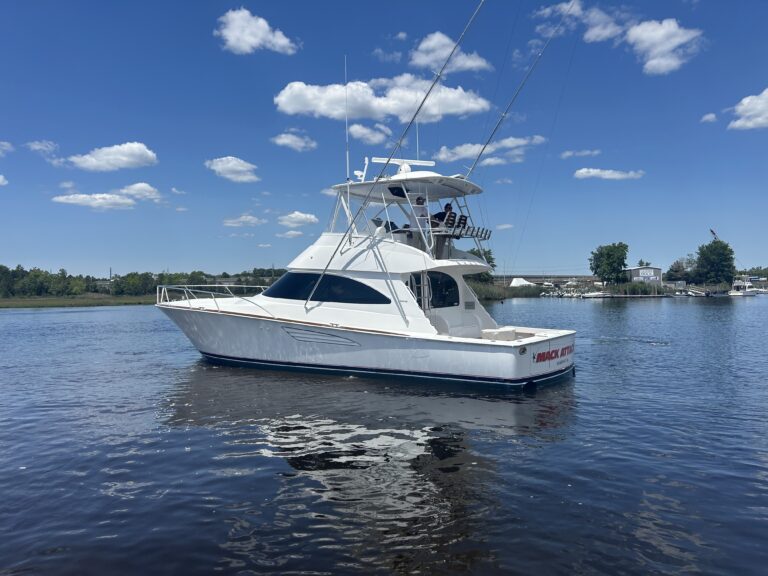Is there a gene for boating? Perhaps that would explain why in some families boating is a passion that spans generations, passed down from one to the next.

William Moriarty remembers boating with his father and his grandfather while growing up in southern New England. “I have been on the water since I was a kid,” says Moriarty, 42, owner and president of operations at Bell and Williams, a Massachusetts-based debt-collection service. “We had a 26-foot Sea Ray and then a 34-foot Silverton. I remember having a good time all the time.”
Moriarty later shared ownership of a 22-foot Pro-Line with his grandfather, an avid fisherman — and fishing is another passion that’s been passed along. Moriarty’s most recent boat was a 25-foot Pursuit. Now there’s a fourth boating generation coming along, his 11-year-old son Will. “He’s a fairly avid fisherman,” Moriarty says. “I got him into it a few years ago, and he’s taken to it.”
And they have a new boat to fish. Moriarty took delivery of a 2005 Carolina Classic 35 this past May. The twin-engine express sportfish can get to the offshore fishing grounds in fair weather or foul, or take the family out on a picture-perfect day for a swim and a picnic.
“We’re all very excited. My father’s been on the boat, and my son got to name it,” says Moriarty. (Will appropriately named the boat Fishing Frenzy.) “I plan to take my grandfather out. He’s 88 and still king of the flounder fishermen.”
Moriarty bought the boat from Essex Marine Group (essexmarinect.com) in Essex, Connecticut, for just over $180,000. “The seller was great,” says Moriarty. “He knew everything about the boat, and that was comforting. [Broker] Chris [Keenan] was fantastic, handling the details and issues that can come up. I would do business with him again in a heartbeat.”
Moriarty had been looking at Henriques and Cabo models — “both good boats,” he says — but the Carolina Classic impressed him. “It seemed like a good all-around boat. It has the seaworthy capabilities that I am after. It’s able to run offshore, but I can also bounce around close to shore with the family [which includes his wife and two daughters] aboard or even just stay aboard at the marina.”
The boat had a few other things going for it, too. A big part of the purchase decision was the low hours on the twin 500-hp Cummins diesels — just 300 hours. The boat was also in good condition. “I wanted to get a few years of trouble-free boating,” says Moriarty. “The low hours were very important. And it has a great hull. I could see it was not a canyon boat that had been pounded. It was clean inside, and I love the layout. It has comforts for the family — a big bunk forward, a nice head — and all the fishing gear I was looking for. I was impressed with the workmanship.”
On the trip from Connecticut to his Salisbury, Massachusetts, home waters he ran at 2,100 rpm and made 25 to 26 knots, using 34 to 36 gallons an hour. “She’ll run like that all day in her sleep,” says Moriarty. “The boat has a nice, heavy feel and plenty of power.”

With the boat’s 435-gallon fuel supply, range should not be a problem. Future plans include trips to Stellwagen Bank and Martha’s Vineyard. “We may go to the canyons or fish off the back side of the island,” he says. “I’m even looking to Maine.”
Meanwhile, father and son will be fishing the local waters around Gloucester. And when they’re not out on the water, you may just find them on the boat anyway. “I think we’ll spend the night, watch a game or just hang out,” he says.
“You know, when the sport utility vehicle first came out, it was more than a car — it could do more. To me, this boat is like an SUV. It can do more. We are all very excited.”
Walkthrough
The Carolina Classic 35 is a twin-diesel, Carolina-built express fishing boat designed and laid out for serious anglers. A big, open cockpit, full range of fishing gear and upscale interior have made it a popular choice since its introduction almost 20 years ago.
The all-fiberglass modified-vee hull (18-degree transom deadrise), with its distinctive bow flare, provides what the Powerboat Guide calls a “truly outstanding rough-water ride.” Original power was a pair of 450-hp Cummins diesels, for a cruise speed of 25 to 30 mph and a range of 350 to 400 miles.
The cockpit is laid out with rigging and bait stations, a sink and icebox, and in-deck fishboxes. The bridge deck is raised from the cockpit, and the helm is set to starboard, with a pedestal seat. An L-shaped lounge to port provides additional seating. Most boats have a hardtop and a tower with a helm station.
The layout below has sleeping accommodations for four, with an offset double berth forward and a convertible dinette. The galley has a two-burner stove, under-counter refrigerator and room for a microwave or coffee maker. The compact head compartment has a marine head, sink and shower. Cabin fit-and-finish is noteworthy.
BACKGROUND
Carolina Classic was known for its 25- and 28-foot express fishing boats when company president Marc Privott introduced a 35-footer at the 1997 Fort Lauderdale International Boat Show. The boat was designed as a full-bore fishing machine. “Carolina to the core,” as Privott described it. Prices on the used market begin at $125,000 to $150,000 for early models and run up to $250,000 for more recent models. This past June, newly formed Edenton Boatworks acquired Carolina Classic and Albemarle Boats. North Carolina businessman Scott McLaughlin had acquired Albemarle in 2008 and Carolina Classic in 2011. McLaughlin merged the brands under one umbrella and sustained the businesses through the Great Recession.
SPECIFICATIONS
LOA: 34 feet, 9 inches
BEAM: 13 feet, 6 inches
DRAFT: 3 feet
WEIGHT: 25,000 pounds
HULL TYPE: modified-vee
PROPULSION: twin diesels
TANKAGE: 435 gallons fuel, 55 gallons water
BUILDER: Carolina Classic Boats, Edenton, North Carolina. carolinaclassicboats.com
This article originally appeared in the August 2015 issue.

